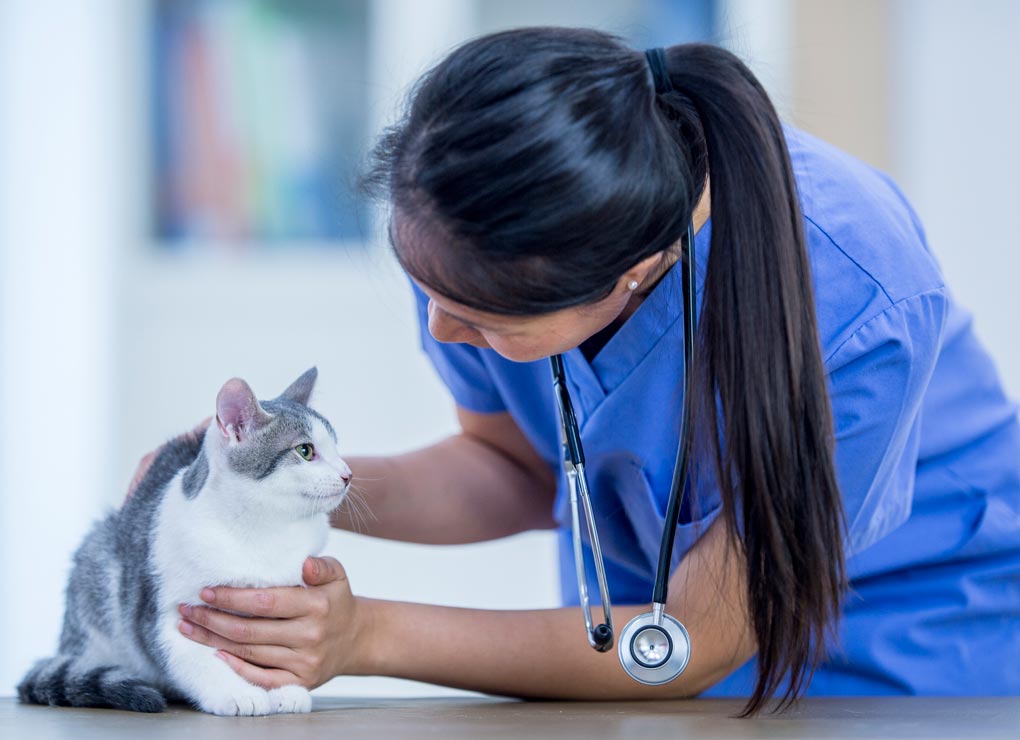Skin Scraping: An Easy Diagnostic Test for Feline Skin Problems

If your cat has a skin problem, you might be noticing that he is licking or chewing himself incessantly, has developed bald spots, has areas of skin that are thickened or red, or is vomiting hairballs more than usual.
You can learn more about why cats lick and chew at themselves here: "Why Does My Cat Pull His Hair Out?"
When your cat has a skin problem, it's critical that you take him to the vet so it can be appropriately diagnosed and treated. Not doing so can result in more problems, like secondary skin infections from the licking and even the development of a behavioral tendency to lick and chew the skin.
When you go to the vet for a skin problem, the doctor will take a thorough history from you about what you've noticed at home. He or she will ask you questions and thoroughly examine your cat. Sometimes, testing is necessary to determine what the exact cause of the problem is. One of the skin tests often performed is a skin scraping.
Skin Scraping Procedure in Cats
A skin scraping is the process of removing some skin cells to look at under the microscope. It helps identify some skin parasites, especially mites, and sometimes fungal conditions like ringworm. It's part of a thorough diagnostic evaluation of a feline skin condition.
How Is a Feline Skin Scraping Done?
To perform a skin scraping, a veterinarian will find an area of skin affected by the disease process which doesn't appear obviously infected or traumatized, if possible. Then, the doctor will slightly pinch that spot to raise and steady it and use a scalpel blade to scrape the area gently. Most cats are not bothered by this, but it will probably require a helper to steady the kitty and keep him from moving away.
The spot on your cat's skin where the sample is taken might ooze a little blood afterward, and it can be gently cleaned with warm water and dried well. It should not require any further care.
Once your vet has the sample, he or she will transfer it to a slide and examine it under a microscope, looking for signs of a parasitic agent like mites or any other abnormal organisms or cells. From there, further tests might be run, or a diagnosis may be made.
You May Also Like These Articles:
X-Rays in Cats: What They Can Tell Your Vet
MRI in Cats: What Is It and Why Might Your Cat Need It?
Common Blood Tests Done on Cats
Why Does My Cat Pull His Hair Out?


